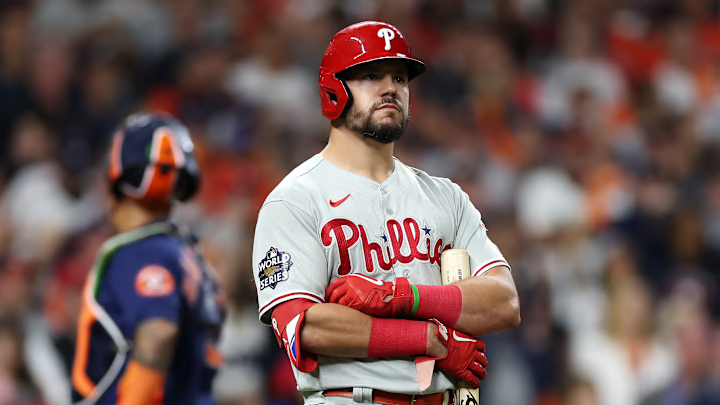How will the Phillies be affected by MLB banning defensive shifts?
Baseball has changed greatly deal since the Philadelphia Phillies were founded in 1883. Adjustments have been made along the way, but none have been as drastic as what fans have witnessed in recent years. Four-man outfields and second basemen shifted into right field have become the norm.
The trend will continue next season, as MLB has decided to ban defensive shifts. Two players must be on both sides of the dirt within the infield.
In 2022, the league-wide battering average was lower than it had been in 54 years. Rob Manfred is looking to restore some of the fiery offense that has not been evident in recent seasons. Unless you are a true fan of the game, it could be hard to appreciate a low-scoring pitcher's duel.
There will be some major changes, but will the Phillies be better off? Left-handed hitters were shifted against in extreme measures, as opposed to right-handed hitters in 2022. Lefties hit against a shifted infield 55 percent of the time, whereas righties saw a shift of just 19.6 percent per plate appearance, according to Baseball Savant. Considering the Phillies have left-handed sluggers like Bryce Harper and Kyle Schwarber, they could benefit from the shift ban.
Player Name | % Shifted Against | wOBA vs. Shift | wOBA vs. No Shift |
|---|---|---|---|
Kyle Schwarber (LH) | 90.5% | .365 | .261 |
Bryce Harper (LH) | 75.5% | .362 | .374 |
Darick Hall (LH) | 87.3% | .368 | .164 |
Rhys Hoskins (RH) | 67.4% | .342 | .353 |
So what exactly does the above data from Baseball Savant tell us? Well, for one, wOBA is an important offensive metric, similar to on-base percentage. Analytics could suggest that the Phillies offense might not improve as much as some would expect. Although it is a small sample size for players like Schwarber, who only had 63 plate appearances versus a normal infield, there is not a notable improvement when there is no shift on him — but rather a significant decrease.
Even though the numbers are not promising, there is reason to think that Schwarber will perform just fine. At the end of the day, MLB players are professionals who adjust after every at-bat.
Someone who could benefit from the shift ban is Nick Castellanos. Despite hitting for a career-low .694 OPS in 2022, better days should be in store. His wOBA jumped more than 30 points when facing a non-shifted infield. Castellanos' offensive struggles were not what Phillies fans expected, so improvements from the former Silver Slugger Award winner would be a huge bonus.
Rob Thomson's squad shifted just 27.3 percent of the time in 2022 — just 23rd in the majors.
And, a lot of the talk surrounding the shift ban has been about how batters will adjust, but there are two sides to a baseball game. One Phillies pitcher particularly has voiced his disliking for the shift. Then-New York Mets pitcher Zack Wheeler made these comments during a 2015 interview:
""... honestly, I don't like it … Teams are starting to become more analytical these days. So I hate to say numbers don't lie because I don't like analytics all that much but I'm not the boss here.""Zack Wheeler
Several years later, Wheeler's words remain true to his game. He prefers to have no shifted infield at all when pitching. In 2022, Wheeler played with a defensive shift behind him just 14.4 percent of the time — one of the lowest percentages for any MLB starting pitcher. The same can be said for Ranger Suárez, Bailey Falter, and Jose Alvarado — who all used a shift less than 17 percent of the time. These are low numbers considering there were defensive shifts for 33.6 percent of plate appearances last season.
There will be times that the shift might have benefited the Phillies. Ultimately, it will help them more than hurt. Phillies fans should prepare for some high-scoring games in 2023.
